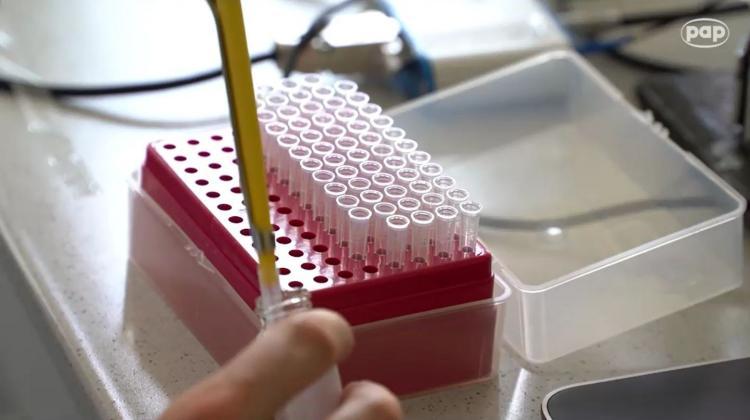Researchers are working on cheap drug detection sensors
 Source: PAP
Source: PAP
Chemists from Łódź want to develop cheap and reliable electrochemical sensors for drug detection. Miniaturization of sensors will allow to build small, portable drug detectors, potentially useful at airports, train stations or for catching street dealers.
The goal of the project is to provide new tools to combat the social problem of drugs, says project leader Dr. Łukasz Półtorak from the Faculty of Chemistry of the University of Lodz.
Currently, two types of solutions are used to detect drugs. The fist solution are colorimetric tests - simple and cheap, but prone to errors. In addition, the interpretation of their results can be difficult. The second are advanced but expensive methods, such as mass spectrometry or chromatography, used by forensic and analytical laboratories.
The new solution - small but accurate - is expected to fill the gap between those two types of tests, the scientists from Łódź say. To detect drugs, they want to use miniaturized sensors (SmallDrugSens), whose operation is based on electrochemistry, the field of science explaining the relationship between chemical reactions and electricity.
In the project, researchers will first focus on miniaturization and develop a new type of polymer membranes with microscopic pores. This will enable miniaturization of measuring devices.
As a result, smaller drug samples will be use for testing than those currently used. The amount of chemicals needed to analyse them will also decrease.
"Thanks to miniaturization, we will be able to reduce the costs associated with the production of sensors, and we will make them portable, which will allow to use them, for example, at airports, railway stations, or in the streets" - says Dr. Półtorak.
Next, the scientists will examine in detail the electroanalytic properties of narcotic substances, mainly cocaine and its metabolites, amphetamine, methamphetamine, heroin and tetrahydrocannabinol (the active ingredient of marijuana).
Important components of the miniaturized sensors will be carbon electrodes, which will serve as the base material for the detection of narcotic substances.
How will it work? To put it simply, if a molecule of a narcotic substance is located near the electrodes, the device will register the transfer of its electrons to the carbon electrode surface. It will also convert this change into an electrical signal.
The surface of the electrodes can be additionally modified with materials of high affinity to specific narcotic substances, which will facilitate their detection. "The reaction between the material on the surface of the electrode and the narcotic molecule can be converted into an electrical signal used in the device that detects drugs" - says Dr. Półtorak.
Researchers will also test another solution for electrochemical detection of narcotic substances: a system of two immiscible liquids - water and oil. At the interface between the water phase and the oil phase, after applying the electric potential, the drug molecules present in the water will pass into an organic solvent solution. This transition can be registered as electric current, and the device will convert it into a measuring signal that will indicate the presence of a prohibited substance.
Ultimately, the researchers will select the solutions with the best parameters, and then test them on samples of real "street" drugs.
The research project will continue for three years. The results can be used in new drug detection sensors. The project "Miniaturization for electrochemistry. Electrochemical sensors for presumptive illicit drugs detection – SmallDrugSens" is financed by the National Science Centre.
PAP - Science in Poland, Kamil Szubański
szu/ zan/ kap/
tr. RL
Przed dodaniem komentarza prosimy o zapoznanie z Regulaminem forum serwisu Nauka w Polsce.















